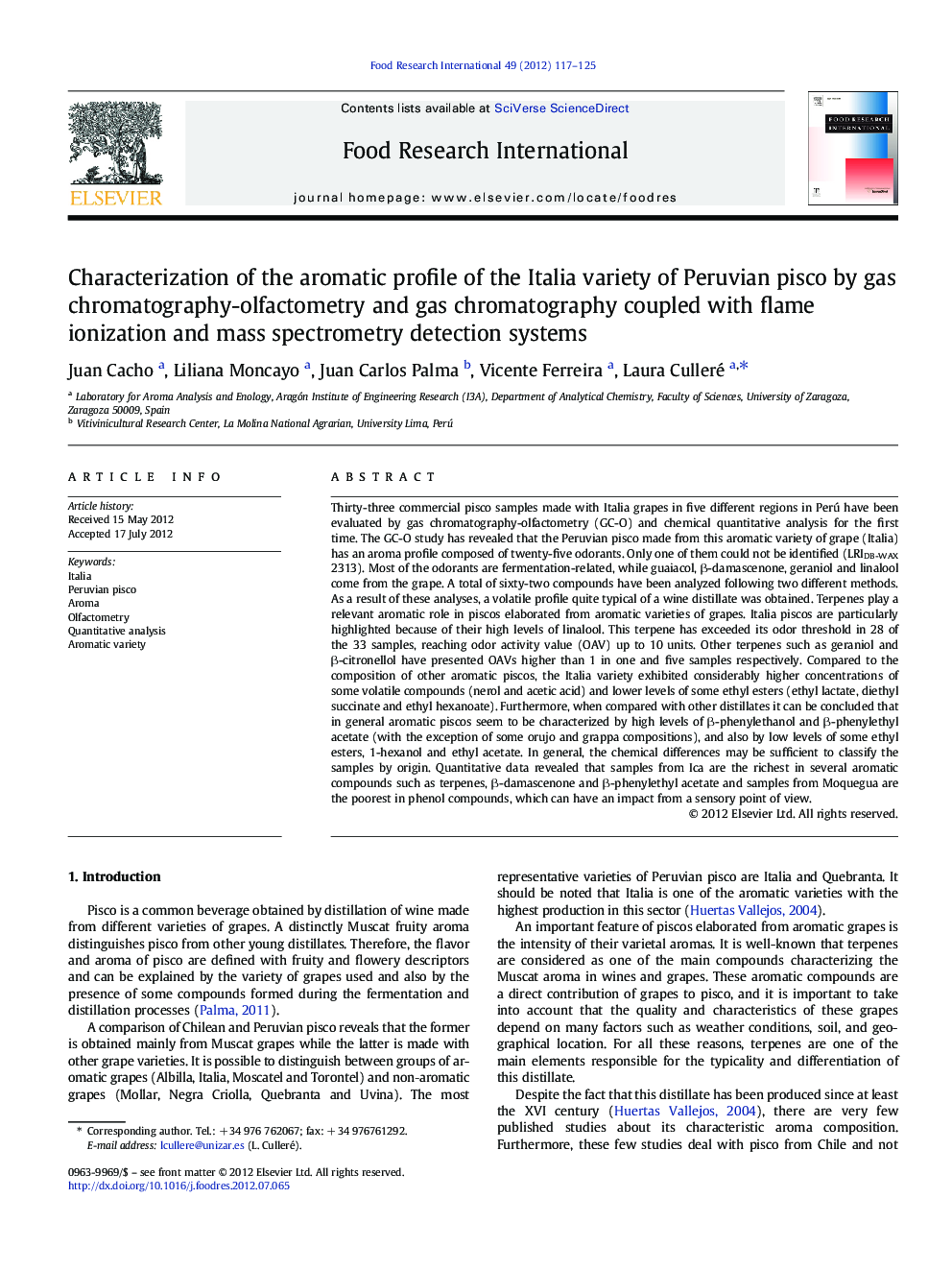| Article ID | Journal | Published Year | Pages | File Type |
|---|---|---|---|---|
| 6399032 | Food Research International | 2012 | 9 Pages |
Thirty-three commercial pisco samples made with Italia grapes in five different regions in Perú have been evaluated by gas chromatography-olfactometry (GC-O) and chemical quantitative analysis for the first time. The GC-O study has revealed that the Peruvian pisco made from this aromatic variety of grape (Italia) has an aroma profile composed of twenty-five odorants. Only one of them could not be identified (LRIDB-WAX 2313). Most of the odorants are fermentation-related, while guaiacol, β-damascenone, geraniol and linalool come from the grape. A total of sixty-two compounds have been analyzed following two different methods. As a result of these analyses, a volatile profile quite typical of a wine distillate was obtained. Terpenes play a relevant aromatic role in piscos elaborated from aromatic varieties of grapes. Italia piscos are particularly highlighted because of their high levels of linalool. This terpene has exceeded its odor threshold in 28 of the 33 samples, reaching odor activity value (OAV) up to 10 units. Other terpenes such as geraniol and β-citronellol have presented OAVs higher than 1 in one and five samples respectively. Compared to the composition of other aromatic piscos, the Italia variety exhibited considerably higher concentrations of some volatile compounds (nerol and acetic acid) and lower levels of some ethyl esters (ethyl lactate, diethyl succinate and ethyl hexanoate). Furthermore, when compared with other distillates it can be concluded that in general aromatic piscos seem to be characterized by high levels of β-phenylethanol and β-phenylethyl acetate (with the exception of some orujo and grappa compositions), and also by low levels of some ethyl esters, 1-hexanol and ethyl acetate. In general, the chemical differences may be sufficient to classify the samples by origin. Quantitative data revealed that samples from Ica are the richest in several aromatic compounds such as terpenes, β-damascenone and β-phenylethyl acetate and samples from Moquegua are the poorest in phenol compounds, which can have an impact from a sensory point of view.
⺠The aroma profile of Italia piscos was evaluated for the first time. ⺠The Italia variety exhibited high levels of nerol and acetic acid. ⺠Italia piscos contain high levels of β-phenylethanol and β-phenylethyl acetate. ⺠Quantitatively, samples from Ica region are considered the most aromatic samples.
